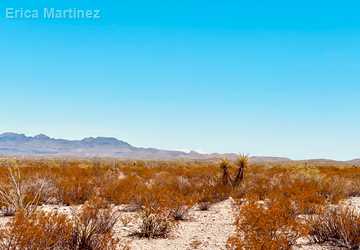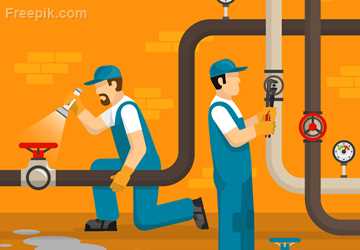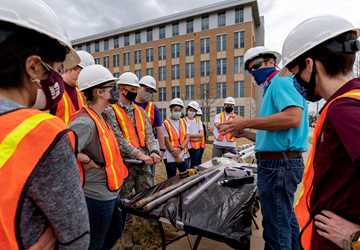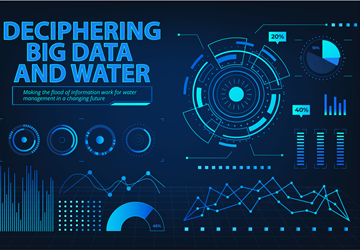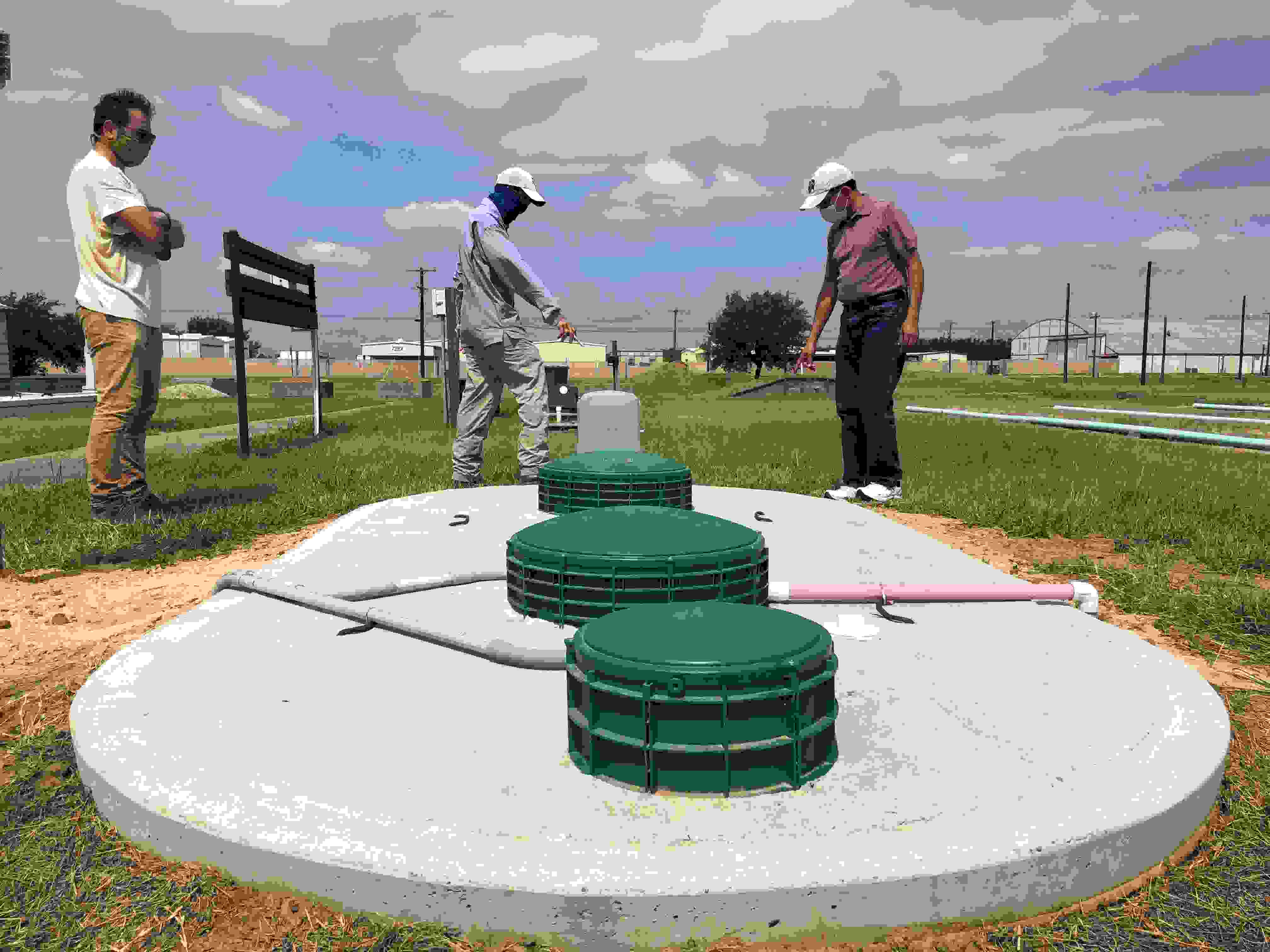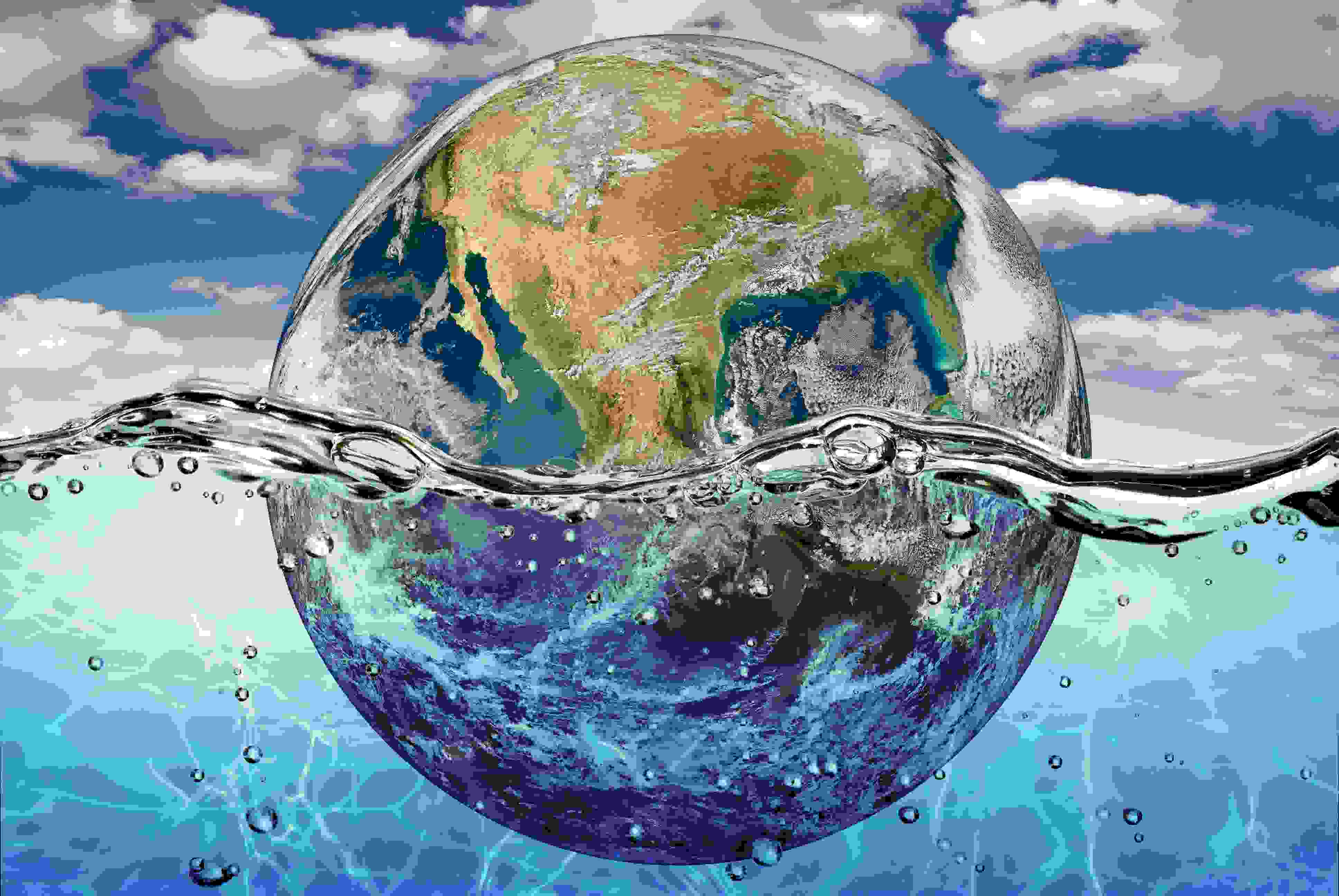The U.S. population is growing and the climate is changing, yet the water systems Americans depend on have remained mostly unchanged for over a century. While big water infrastructure elements have always been built to last — be it the Hoover Dam, the irrigation canals of the Rio Grande or the cast iron pipes of cities everywhere from years gone by — every technology has a lifespan. At a certain point, it needs to be repaired, replaced or reconsidered.
“A lot of infrastructure in this country is aging,” said Manny Teodoro, Ph.D., associate professor at the La Follette School of Public Affairs at the University of Wisconsin-Madison and previously professor of political science at Texas A&M University.
“But in the water sector, it’s worse than most other sectors of the economy that rely on large, fixed infrastructure,” he said.
The problems presented by old water infrastructure, such as lead in the pipes that carry drinking water into people’s homes, can be quite costly. This applies both in terms of the human cost if pipes are not maintained and replaced, as the water crisis in Flint, Michigan, famously exposed, but also in terms of financial costs.
A 2016 report by the American Water Works Association (AWWA) estimated that 15-22 million people in the United States are served by about 5.5-7.1 million water service lines — the pipes that deliver water from the municipal main or transmission line into individual homes — that are made of or contain lead. The group projected that replacing just those leaded service lines could cost over $30 billion.
The issue of lead in drinking water service pipes is just one small example of the costly problems associated with old water infrastructure.
Out of sight, out of mind and out in the (funding) cold
Estimated reading time: 13 minutes
Americans have depended on aging centralized water infrastructure, but the impacts of climate change mean the future of water infrastructure might be increasingly decentralized.
More Information
- Colonias: The canary in the water security coal mine, txH2O
- 2021 state of the water industry, American Water Works Association
- H.R.3684 - Infrastructure Investment and Jobs Act, U.S. Congress
Want to get txH20 delivered right to your inbox? Click to subscribe.
Funding the repair and replacement of the big elements of the United States’ centralized water infrastructure — water mains, municipal pipes, sewer systems, treatment plants, dams and reservoirs — has its own problems. Chief among these is that those elements are mostly invisible to the public, Teodoro said.
“If people don’t see it, historically there’s been a tendency to underinvest in the replacement and maintenance of those systems until they fail,” he said. “They are beginning to fail, and they have been failing across the country.”
Even if the need to invest in big water system infrastructure is not visible to most people, water professionals are acutely aware of the need. In 2001, AWWA announced the “Era of Infrastructure Replacement” had begun. Ten years later, it estimated at least $1 trillion would need to be spent through 2035 to repair or replace the nation’s buried drinking water infrastructure alone just to maintain the same level of water service to a growing population. Addressing other big infrastructure elements like dams, reservoirs, treatment plants and pump stations would cost even more.
Today the need for water infrastructure repair and replacement is just as pressing as it was in 2011. And costs have only grown, making the resounding question still: How will we pay for it?
“We have been putting off answering that question for a long time, about 50 years or so,” said Robert Greer, Ph.D., associate professor in the Texas A&M Bush School of Government and Public Service and Fellow of the Bush School’s Institute for Science Technology and Public Policy. He pointed out that some water pipes have been in the ground for 30 years longer than ever intended and at the very least should be maintained.
Finding the money to maintain aging water infrastructure, let alone replacing it, has been an issue for most municipalities. In addition to the challenge of being “out of sight, out of mind,” water infrastructure has usually been excluded from federal infrastructure funding projects.
“Infrastructure, for a really long time, was limited to transportation,” Greer said. “So, when the feds said, ‘infrastructure,’ they really meant highways. Sometimes they meant bridges and dams, but it didn’t mean local water systems like pipes and pumps and wastewater treatment facilities.”
However, the conversation on federal infrastructure funding has recently shifted to include water infrastructure.
The Infrastructure Investment and Jobs Act, H.R. 3684, signed into law on Nov. 15, 2021, allocated $55 billion to water infrastructure and an additional $6.6 billion to western water storage. The $55 billion figure specifically included $11.4 billion each for the Clean Water State Revolving Fund and the Drinking Water State Revolving Fund, plus additional funds for those efforts to specifically address contaminants like per- and polyfluoroalkyl substances (PFAS) and lead.
Despite being signed, the question of how those funds will ultimately be distributed remains. Greer pointed to the differences in how the federal Emergency Rental Assistance program funds related to the COVID-19 pandemic were distributed by different states as an example of uncertainty.
“The devil is always in the details, and policy is all about implementation,” he said.
Shifting perspectives on water infrastructure jurisdiction
Many of those details come down to jurisdiction. Just as lawmakers have shifted their perspectives on what counts as “infrastructure” to include water infrastructure, so too has there been a shift in how water infrastructure jurisdiction is considered.
“Traditionally the way we think about things is that the utility owns everything on one side of the meter, and the customer owns everything on the other side of the meter,” Teodoro said.
The utilities’ side of the meter includes things like distribution mains, treatment plants, holding tanks and pumping stations. On the other side of the meter are things like water service lines, in-house plumbing and the sewer laterals that take sewage out to the municipal wastewater pipes.
“I think there is a growing recognition that a lot of our public health problems are ‘behind the meter,’” said Teodoro. “We maybe need to rethink our paradigm of who is responsible for what. But as soon as you open that box, in addition to the expenses, now we’re dealing with a whole host of other social management and legal questions.”
Running out of water is a huge, but regionally specific, problem. There is no one-size-fits-all solution, and we have a real challenge.
Some of those questions specifically apply to water supply infrastructure. Greer noted that the repair and replacement of lead service pipes is not controversial in terms of federal infrastructure funding. But local supply and water diversification efforts, such as more reservoirs, pipelines or brackish desalination plants, very much are.
“It’s really difficult trying to talk about some of those projects objectively because there are so many people who have really strong opinions and vested interests,” Greer said. “Running out of water is a huge, but regionally specific, problem. There is no one-size-fits-all solution, and we have a real challenge.”
Shifting perspectives on what water infrastructure even means
Along with the other perspective shifts related to water infrastructure, the overall perspective on what counts as water infrastructure needs to shift, said Amber Wutich, Ph.D., President’s Professor and director for the Center for Global Health at Arizona State University. She said what most Americans think of as water infrastructure, such as dams, reservoirs, treatment plants, pipes and mains, is a narrow view of a specific form of water system: a centralized one.
The U.S. Centers for Disease Control and Prevention (CDC) estimates that over 90% of Americans get their household water from centralized systems. This means just under 10% — or roughly 33 million people — don’t. Of those, the CDC estimates that about half depend on private wells, which are the sole responsibility of owners. Similarly, the U.S. Environmental Protection Agency (EPA) estimates that over 20% of Americans are served by decentralized wastewater treatment systems such as private septic systems, which are also the sole responsibility of their owners.

Other examples of decentralized water and sewage systems include above- or below-ground cisterns, composting toilets, home water filter systems and having water trucked in. Even buying bottled water is a part of the water infrastructure landscape, according to Wutich. She called these and other technologies, strategies and behavior patterns part of a “mosaic water provisioning system.”
While these may not be part of what many Americans think of as water infrastructure, decentralized systems are nonetheless ways people get clean water into, and eliminate waste or wastewater from, their homes.
“There have been millions of people in these kinds of arrangements in the United States that have not been much attended to,” Wutich said. She explained that rural communities, unincorporated communities such as colonias, and other underserved populations around the country have been living with unreliable connections to centralized water and sewage systems or none at all.
“An important starting point when thinking about the future is acknowledging that many more people than we realize are already not part of centralized water distribution systems and probably more will join them,” Wutich said.
Climate change and water infrastructure
Wutich said that climate change and how it is and will impact water infrastructure are the most pressing issues related to water infrastructure, both in the United States and abroad.
“Infrastructure is built with a certain set of assumptions, and increasingly those assumptions are not reflecting reality,” Wutich said, speaking specifically of the impacts of climate change. She gave several examples, including the increase in the number and intensity of droughts across the Southwest, flooding in coastal Texas and wildfires in California.
Regarding fire, Wutich gave the example of the 2018 Camp Fire that destroyed the town of Paradise, California. Though that specific fire was sparked by electrical transmission lines, climate change is widely credited with creating the perfect situation for wildfires to become record-setting infernos like the Camp Fire. The chronic drought and increased temperatures of climate change in the West combines to create an abundance of dead, dry trees and plant life that help fuel fires and the weather conditions that help them spread.
The Camp Fire leveled buildings and melted the underground water pipes in Paradise. This largely destroyed the town’s centralized water infrastructure. Pipes that didn’t melt delivered water so tainted with chemicals that it was unsafe to drink or use. The fire similarly destroyed large portions of the Miocene Canal, which delivered water to local farmers and ranchers.
“The result of the Camp Fire is a perfect example of what we expect to see more and more: people who have had stable housing and water infrastructure for decades in the U.S. West who are going to be permanently displaced because of the changes brought by climate change,” Wutich said.
“It is also a great example of the fact that it is already happening,” she added. “There are people in our communities who are already being affected.”
Infrastructure is built with a certain set of assumptions, and increasingly those assumptions are not reflecting reality.
Amber Wutich, Ph.D.Asking the right questions for the future
Both Teodoro and Wutich noted that the United States’ success with centralized water and sanitation systems might prove to be an Achille’s heel for most Americans when it comes to thinking about and preparing for the future.
“There is nothing more important than water, and yet, because people are so accustomed to receiving water service at home, they don’t recognize the everyday miracle that it really is,” Teodoro said. “That is an ironic result of the success we have had building and maintaining our water infrastructure so far. If you were to ask people 200 years ago, they would be keenly aware of how essential water is.”
Wutich also pointed out that a U.S.-based perspective limits the sorts of questions Americans ask and how they think about future solutions.
“The questions we ask are probably too small and are not meeting well enough with what the future will probably look like, even in the U.S.,” she said. “There is enormous variability in how people manage water globally, but we in the U.S. have really just had variants on one model for the past 100 years that has worked incredibly well and given us an enormously incredible quality of life.”
She suggested a shift of perspectives when asking about the future of water infrastructure.
“The question is, if we assume high variability in people’s access to stable, centralized water infrastructure, what will water provisioning need to look like to meet people’s basic water needs?” she said. “This is why colonias are so important. They are a perfect example of communities that are in hybrid water systems and give us a model of what many more people might be looking at in the future.”
Funding for the future
While the issue of funding the future of water infrastructure is a complicated one, the recently passed federal infrastructure bill will help alleviate some parts of the issue in the short term. But it won't be a cure-all. Teodoro pointed out that, while federal money can help utilities, it is not “free money,” but usually takes the form of revolving loan funds.
“These loans can save utilities significant money, but it’s still only at the margins — local ratepayers still have to pay the bills,” he said, adding his concern that federal intervention be seen as a solution to the issues. “Running these systems to failure and then waiting for federal bailouts every 50 years or so is not a sustainable funding model.”
Greer voiced guarded optimism about the possibilities the infrastructure bill could create for improving the current situation.
“At this point, I feel confident saying that some of the money for repairing and replacing some of our aging infrastructure is going to come from the federal government,” Greer said. He also noted that the current administration recently announced the U.S. Department of Agriculture will also be creating a program for rural water infrastructure.
Speaking before the bill was signed into law, Wutich said the funds, if invested well, could put the country in “an incredible position to address some of the future stressors of climate and our water infrastructure.”
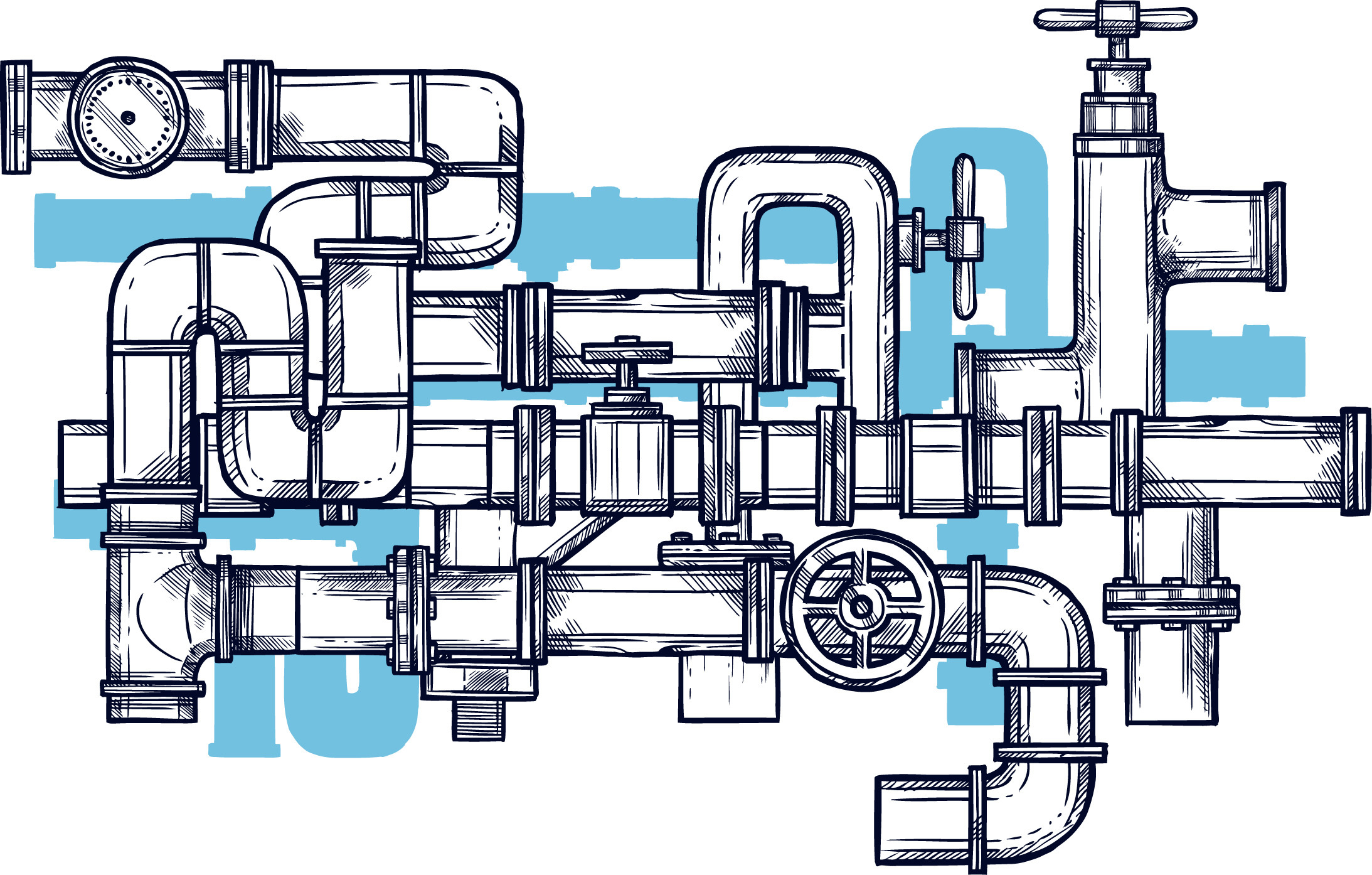
We are trying to think forward and ask, ‘What do we need infrastructure to look like in 20, 50 and 100 years?’ There are just hordes of people with solutions ready to test and ready to launch.
She also noted that, while many water researchers’ projections paint a foreboding future, the scientific community is ready to help take on the challenges ahead, and that increased funding will help immensely in that effort.
“We are trying to think forward and ask, ‘What do we need infrastructure to look like in 20, 50 and 100 years?’” she said. “There are just hordes of people with solutions ready to test and ready to launch. We’ve all trained to be there to help solve these problems that we know our society is going to face. We are excited and invigorated.”
Explore this Issue
Authors
As communications manager for TWRI, Kerry Halladay provided leadership for the institute's communications. As a strategic coordinator, she served as liaison between AgriLife's Marketing and Communications department and the client groups: TWRI, the Natural Resources Institute, the Norman Borlaug Institute for International Agriculture, and the Institute for Infectious Animal Diseases.


